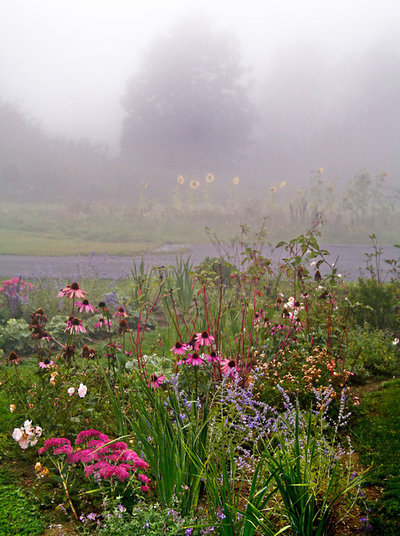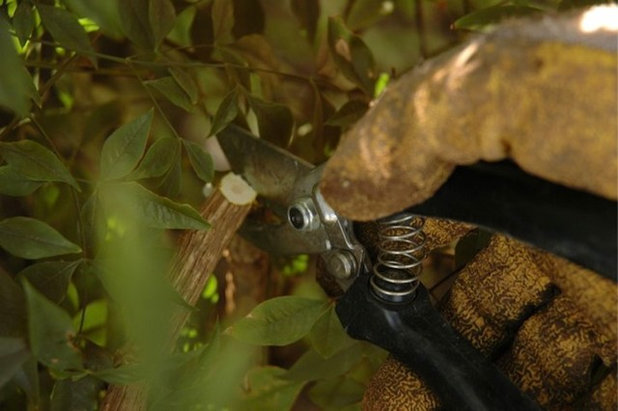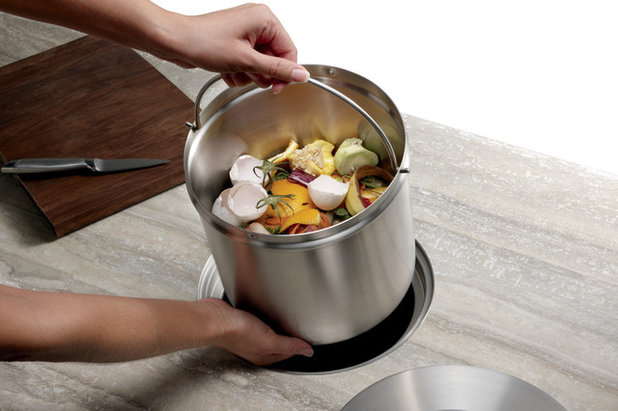September is a transition month in the garden. Although we may still have warm, even hot, weather, it's time to clean up our summer gardens to make room for autumn's bounty. Cooler days and crisp evenings and mornings will be here soon enough — in some areas of the country, it's time to begin cool-weather planting, while in others, planting will have to wait a few weeks. But in every part of the country, it's time to say goodbye to summer and prepare for what's ahead.

The Brickman Group, Ltd.
Assess your garden. Take advantage of this break in between seasons to assess your garden. What worked or didn't work in your garden this year? Is your perennial bed getting too shady? Do your trees need to be pruned and limbed up to allow more light? How did your lawn fare over the summer? Is your irrigation system functioning properly? Does your soil need to be amended or improved? Staying on top of all the changes in your garden and implementing the appropriate modifications will keep your outdoor space healthy, lush and thriving.

Matthew Cunningham Landscape Design LLC
Plan your fall garden. Before you plant anything new in your garden, make a list of plants you want to try (perennials, annuals, trees, shrubs and vegetables) and make sure you know the proper planting times for each one in your area.
Use graph paper to plot out any new garden beds — doing so will help you to accurately plan plant quantities and spacing.
Determine if any organic matter is needed to amend your existing soil. Then use peat, compost, compost manure or sand to get the desired consistency for plant health.

J. Peterson Garden Design
Cut back struggling perennials. Although it may not be time to cut back all perennials, it's safe to prune those plants that have struggled through the summer heat. Use bypass pruners (hand pruners with blades that overlap when they cut) to remove any dead, diseased or dying growth on your perennials. This will give your garden a neater, more tended-to appearance going into fall and will help keep diseases at bay.

BLANCO
BLANCO
Start a compost pile. Choose a fairly sunny site with some dappled shade for your pile, if you are starting a new one. Piles in full sun may dry out too quickly, while piles located in too much shade will stay too wet.
Gather materials to mix:
- leaves
- plant clippings
- old potting soil
- grass clippings
- kitchen scraps, like eggshells, coffee grounds, and fruit and vegetable peelings
Aim for a ratio of 1 part green materials (grass clippings, kitchen scraps) to 1 to 2 parts brown materials (dead leaves and plants).
Layer materials in a pile, moisten it with water and turn all the ingredients to mix them. Continually add to your pile and every week or so moisten and mix to ensure everything is breaking down as quickly as possible.

Shades Of Green Landscape Architecture
Clean up the vegetable garden. Now's the time to clear out old and languishing vegetables from your warm-season garden. If you leave summer squash, tomatoes, cucumbers and melons in your garden too long after they cease to be productive, they can develop a powdery mildew, which can spread to other plants. Be proactive and clean out old edibles to get ready for cool-season greens, squashes and herbs.





